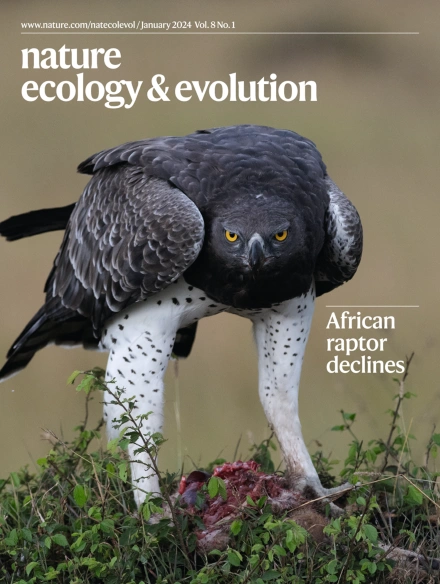Overwintering fires can occur in both peatlands and upland forests with varying ecological impacts
IF 13.9
1区 生物学
Q1 ECOLOGY
引用次数: 0
Abstract
Climate warming is increasing the prevalence of overwintering ‘zombie’ fires, which are expected to occur primarily in peatlands, undermining carbon storage through deep burning of organic soils. We visited overwintering fires in Northwest Territories, Canada, and Interior Alaska, United States, and present field measurements of where overwintering fires are burning in the landscape and their impact on combustion severity and forest regeneration. Combustion severity hotspots did not generate overwintering, but peat and woody biomass smouldering both supported overwintering, leading to wintertime smouldering in both treed peatlands and upland forests. These findings create challenges for fire managers and uncertainty about carbon emissions, but forest regeneration was not compromised. Field measurements of fires burning over winter at 20 sites in the Northwest Territories of Canada and in Alaska find that such fires occur in both peatlands and upland forests, and provide information on the ecological conditions and effects of such fires compared to single-season burns.


越冬火灾可发生在泥炭地和高地森林,具有不同的生态影响
气候变暖正在增加越冬“僵尸”火灾的流行,预计主要发生在泥炭地,通过深层燃烧有机土壤破坏碳储存。我们考察了加拿大西北地区和美国阿拉斯加内陆的越冬火灾,并对越冬火灾在景观中的燃烧位置及其对燃烧严重程度和森林再生的影响进行了实地测量。燃烧严重热点不产生越冬,但泥炭和木质生物质闷烧都支持越冬,导致泥炭树地和山地森林的冬季闷烧。这些发现给火灾管理者带来了挑战,也给碳排放带来了不确定性,但森林再生并没有受到损害。
本文章由计算机程序翻译,如有差异,请以英文原文为准。
求助全文
约1分钟内获得全文
求助全文
来源期刊

Nature ecology & evolution
Agricultural and Biological Sciences-Ecology, Evolution, Behavior and Systematics
CiteScore
22.20
自引率
2.40%
发文量
282
期刊介绍:
Nature Ecology & Evolution is interested in the full spectrum of ecological and evolutionary biology, encompassing approaches at the molecular, organismal, population, community and ecosystem levels, as well as relevant parts of the social sciences. Nature Ecology & Evolution provides a place where all researchers and policymakers interested in all aspects of life's diversity can come together to learn about the most accomplished and significant advances in the field and to discuss topical issues. An online-only monthly journal, our broad scope ensures that the research published reaches the widest possible audience of scientists.
 求助内容:
求助内容: 应助结果提醒方式:
应助结果提醒方式:


